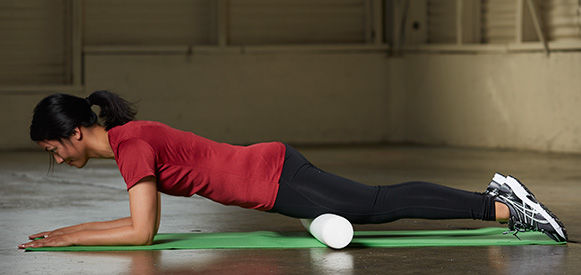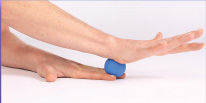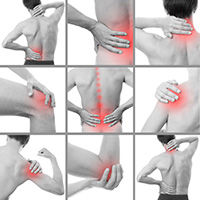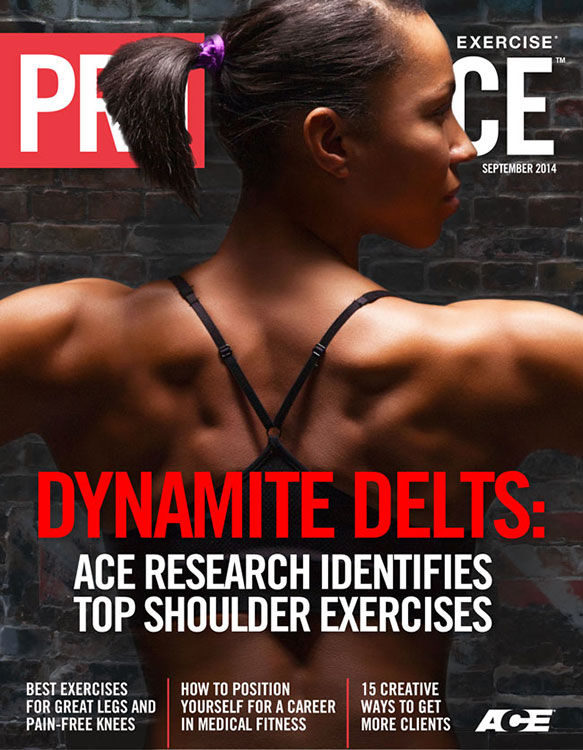
By now you are no doubt at least familiar with foam rolling for myofascial release, also called trigger point release. This method has been shown to:
- Improve joint range of motion (ROM) without the risk of reducing neuromuscular performance in either high-force/low-velocity or high-velocity/low-force muscular actions
- Reduce the deterioration in countermovement jump performance to improve one’s ability to perform again more quickly
- Reduce muscle soreness in order to improve their ability to train again more frequently
- Reduce arterial stiffness
- Improve arterial and vascular endothelial function (Beardsley, 2013)
But foam rolling isn’t the only method available for relieving the pain and discomfort of trigger points. Here are some facts about trigger points that you may not be aware of, along with alternatives for releasing those sometimes persistence “knots.”
What Is a Trigger Point?
“Trigger points are hypersensitive areas that develop throughout the body as a result of injury or overuse,” explains Ryan Halvorson, a master trainer for Trigger Point, a certifying organization for trigger point release. “Aside from being tender and oftentimes painful, a trigger point has the capacity to decrease movement quality and range of motion. Inhibited movement quality and range of motion can lead to decreased physical performance and increased risk for pain or injury. Trigger points may also hasten wear and tear of the body's musculoskeletal system.”

Some refer to these hypersensitive areas as “knots.” A knot is essentially an area in the muscle that is contracting in that specific spot. While injury and overuse can be the cause of trigger points, other proposed reasons include localized dehydration in fascial tissue and lack of blood flow to localized areas, caused by inflamed fascia.
Trigger points can cause both localized and referred pain to other areas of the body. For instance, a trigger point in the trapezius muscle can cause neck pain and headaches.
Because the study of myofascial tissue is still relatively new, experts do not always agree on every aspect of trigger points and the myofascial system. It is, however, a rapidly evolving and exciting area from which we will most likely see new research emerging.
Methods of Trigger Point Release
Even if you’re not currently qualified to use all of the following methods with your clients, it is important to know what is available and who in your community you can refer clients to when traditional foam rolling isn’t enough.
The MELT Method
At first glance, The MELT Method appears to be just another take on foam rolling. Not so, says Sue Hitzmann, M.S., C.S.T., N.M.T., a nationally recognized somatic-movement educator and manual therapist, creator of The MELT Method, and author of The MELT Method.
“MELT is different in every way, from tools to techniques,” Hitzmann says. “First, we use a soft roller instead of a hard foam roller and we don’t really roll very much at all in MELT. Traditional foam rolling is based on heavy compression force to improve blood flow to muscle.” MELT, she explains, is a light touch therapeutic method of self-care for anyone at any age. “The focus of this unique form of Hands-Off Bodywork® is on restoring the cellular hydration of the connective tissue system to restore balance in the three regulators of the nervous system. When we do compression techniques, there’s a systematic approach using multiple techniques that eases pressure into the tissue with greater precision. The lighter touch allows the connective tissue cells to adapt more efficiently to improve the movement.”

No other fitness or self-care technique addresses the rehydration of the connective tissue system and rebalancing of nervous system regulation as specifically as MELT does, claims Hitzmann. “The connective tissue system, not the muscle system, is responsible for misalignment, imbalance, chronic pain and discomfort. Once you rehydrate your connective tissue, muscle compensation and imbalance improves and your muscles don’t have to work overtime. Then you can exercise in a way that actually improves overall performance, balance and movement.”
You can learn more about MELT in Hitzmann's book or by becoming a certified MELT instructor through a combination of online and live training workshops.
Rolfing
Often confused with deep tissue massage, Rolfing is named after its creator, Ida Rolf, Ph.D. Rolf began developing her system in the 1920s to help the chronically disabled who had been unable to find help elsewhere. Her main goal was to organize the human bodily structure in relation to gravity. This method was originally called "Postural Release" and later “Structural Integration.” It is now commonly known as Rolfing.
Ray McCall, a Certified Advanced Rolfer in Boulder and former student of Dr. Rolf, once said that what Rolfers™ do can be summed up in three words: palpation, discrimination and integration. “We palpate, or touch the tissue, feeling for imbalances in tissue texture, quality and temperature to determine where we need to work. We discriminate, or separate fascial layers that adhere and muscles that have been pulled out of position by strain or injury. Finally, we integrate the body, relating its segments in an improved relationship, bringing physical balance in the gravitational field.”

Do YOU Have Trigger Points?
If you check off several of the following signs and symptoms, you most likely have active trigger points.
- Muscles are sensitive to pressure
- Stiff or tight feeling
- Headaches
- Dull, aching, or burning pain in muscles
- Pain going down the arm or leg
- Numbness or tingling
- Muscle weakness
- Unpredictable, erratic symptoms
- Heat eases the pain
Source: triggerpointreleasetherapy.com
In other words, Dr. Rolf’s system is designed to realign the body through deeply manipulating and reorganizing connective tissue and fascia. Interested in becoming a Rolfer? The Rolf Institute of Structural Integration has certification programs for those with and without professional massage experience.
Instrument-assisted Soft Tissue Mobilization (IASTM)
Unless you’re a chiropractor, physical therapist, occupational therapist, physician or athletic trainer, you might not qualify to become certified in instrument-assisted soft tissue mobilization (IASTM). You can, however, refer a client to someone who is trained in this method and explain how it works.
With the use of specific tools, IASTM is another form of myofascial release that allows the practitioner to reach more deeply and precisely into the fascial tissue than can be reached with knuckles or elbows. It is used to treat many common maladies, including those that can be fitness-related, such as plantar fascitis, tennis elbow, golfer’s elbow, rotator cuff tendinitis, patellofemoral syndrome, lumbar and cervical sprain/strain, shin splints and Achilles tendinitis.
While the myofascial system is not yet completely understood, it is a quickly emerging area in our industry. It is important that you understand the role the myofascial system plays in pain and muscle imbalances in your clients’ bodies so that you can then work with their trigger points and not against them.
Reference
Beardsley, C. (2013). Does research support the use of foam rolling? Strength and Conditioning Research, October 1, 2013.





 by
by 





